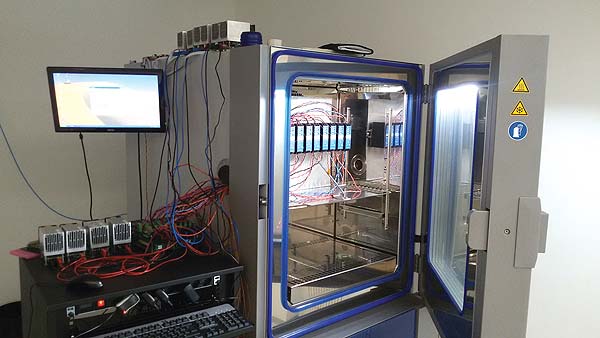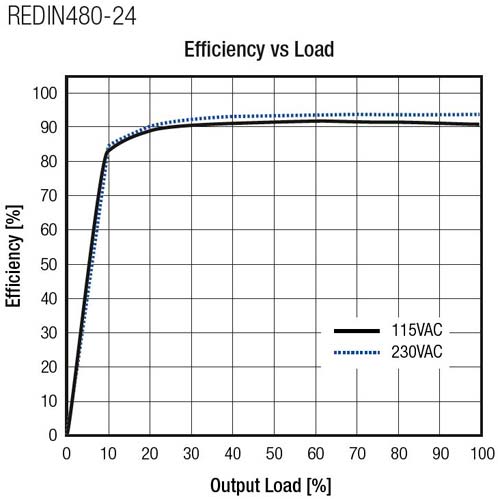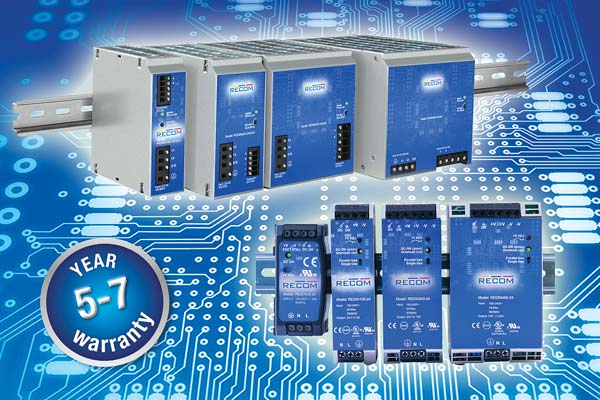 At some stage of every project there comes a point where the developer has to ask which power supply is best suited to the application. Ever shorter development cycles, stricter specifications, and tighter budgets make the selection difficult.
At some stage of every project there comes a point where the developer has to ask which power supply is best suited to the application. Ever shorter development cycles, stricter specifications, and tighter budgets make the selection difficult.
This article provides an overview of the details that need to be considered when making that choice.
The power supply is the heartbeat of every electrical system and yet it is so often overlooked until the last moment. Choosing the right power supply seems a simple task: You pick a device with the appropriate output voltage and power and at the most favorable price. But in order to have a satisfactory solution in the end, you need to take a closer look.
Wide input range for varying nominal voltages
As a rule, power supplies are supplied from the public mains or an industrial supply grid. In rare cases, a power generator is also used. Nominal voltages from the public mains are usually standardized. While the nominal mains voltage in Europe is 230Vac/50Hz ±10%, there are numerous other standards available outside Europe. In the USA, 120Vac/50Hz are common, while in China 220Vac/50Hz come out of the wall socket. Ideally, the selected power supply should cover all these nominal voltages and their boundary areas. This results in an operating range of 85Vac to 264Vac. However, a closer look at the data sheet is well worthwhile here. Even if the selected power supply offers very good efficiency of over 90% at a nominal voltage of 230Vac, it might only be 70% at 120Vac.

Figure 2: Peaceful coexistence: Network slicing distributes applications to various virtual networks to ensure eMBB, mMTC, and uRLLC can be used simultaneously. — (Source: Recom)
Influence of efficiency on the service life
When comparing various efficiency figures, one or two percentage points more do not sound like a significant difference. Nor will this figure help to achieve any major energy savings. And yet these few percentage points can make a huge difference. For example, if you compare one device with 90% efficiency and one with 92%, it does not appear to be a large deviation at first glance. But if you consider the resulting losses, however, one power supply has only 8% and the other 10%. The device with 92% efficiency therefore has one-fifth less losses that are emitted as heat. Sometimes this small difference is enough to do without additional forced cooling. And this, in turn, helps to save valuable space.
A much more important fact, however, is that less heat generation has a positive impact on the system’s service life. As this has a direct influence on the life expectancy of a system. The Swedish chemist Svante Arrhenius discovered the relationship between chemical reaction rate and temperature back in 1889. The Arrhenius equation provides a rule of thumb that states an increase in temperature by 10°C doubles the probability of failure. In other words: The life expectancy is halved. This means that just two percentage points more in efficiency can contribute to significantly extending the life expectancy of a switched-mode power supply unit.
MTBF – calculated reliability
The reliability of a switched-mode power supply unit is closely related to the MTBF (mean time between failure). The importance of the MTBF is best illustrated by the so-called “bathtub curve” (Figure 1). This is divided into three sections: early failures, useful life failures, and end of life wear-out failures. The MTBF only covers the middle section; i.e. it does not cover “infant mortality” or the effects of wear and tear. This easily explains why the MTBF for power supplies is often stated in several million hours.

Figure 3: The efficiency of RECOM’s REDIN480 is not only 93% at full load but also remains stable and high across a wide load range. — (Source: Recom)
The MTBF can also be determined according to various standards. The most common ones are MIL HDBK 217F, Bellcore TR-NWT-000332, and SN29500, which is also referred to as the “Siemens standard”. The results of these calculation methods differ considerably in some cases. Therefore, when comparing MTBF values, it is important to ensure that they are determined according to the same standard and under the same conditions (e.g. ambient temperature).
One thing these methods do have in common, however, is that the MTBF of the switched-mode power supply unit results from the sum of the values of the components. This is why the “component count” also has a decisive impact on the MTBF value. Simple switched-mode power supply units often have a significantly higher MTBF value. Nevertheless, this does not necessarily mean that they are more reliable.
In summary, the MTBF is a good comparison of the reliability of similar devices, but it does not allow you to make any statements on life expectancy. This is only possible through extensive testing.
Tested reliability
A first statement can be made after a 96-hour test. This highly accelerated stress test (HAST) is carried out in a climatic chamber under defined ambient conditions (e.g. +85°C/95% relative humidity) as a so-called storage test (i.e. the test specimens are not in operation). The test specimens are measured according to their data sheet parameters before and after testing. Based on the differences, a conclusion can then be drawn about the service life. Ninety-six hours under the aforesaid conditions correspond, for example, to 24/7 operation for 7¼ years. In addition, a 1000-hour test, optionally as a storage test (e.g. +85°C/50% relative humidity) or a life test (i.e. the test specimens are tested in operation, at maximum permissible ambient temperature) is often performed to verify the results.

Figure 4: RECOMs feature high electrical strength and high reliability; ideal for industrial cabinets operating in harsh environments. — (Source: Recom)
Reliable DIN rail power supplies for 1-phase or 2 and 3-phase mains environments
Drawing on its experience of producing millions of DC/DC and AC/DC converters, RECOM has developed a series of DIN rail power supplies designed for maximum service life. In order to create appropriate safety buffers, only components of the highest quality were used whose operating temperature is well above the values specified for power supplies.
The DIN rail power supplies of the REDIN series are characterized by their particularly slender design and are additionally equipped with a side mounting system. This is particularly advantageous for switch cabinets with low installation depth.
Their wide input voltage range of 85Vac to 264Vac ensures they are suitable for worldwide use. Due to the high efficiency of 93%, only a slight amount of waste heat is generated, which means the power supplies can be used at operating temperatures of -25°C to +70°C without forced cooling. The modules are equipped with active PFC and the power factor is over 0.95. They are suitable for n+1 parallel operation, either to provide redundancy or to permanently increase the output current. The modules are equipped with intelligent overload and short-circuit protection that switch off the device as soon as the maximum permissible temperature has been reached in order to avoid permanent damage. The power supplies are certified to IEC/EN/UL60950 and UL508.
Furthermore, the REDIN/3AC series is now available for operation in 2 or 3-phase mains environments. It is designed for extreme stability even in the harsh environment of process automation and runs reliably under mains voltages of 320 to 575Vac even if the third phase fails.
The series supplies 120W, 240W, 480W or 960W at nominal 24Vdc with a ripple current of just 40mV; or 22.5 – 29.5Vdc adjusted by a precision potentiometer.
To increase the level of output, the devices can be connected in parallel without any further precautions; the droop-mode control with current limitation ensures a balanced load.
Axel Stangl,
Product Sales Manager Power Semiconductors, Rutronik
Bianca Aichinger,
Product Marketing Manager , RECOM Power GmbH, (Gmunden/Austria)



